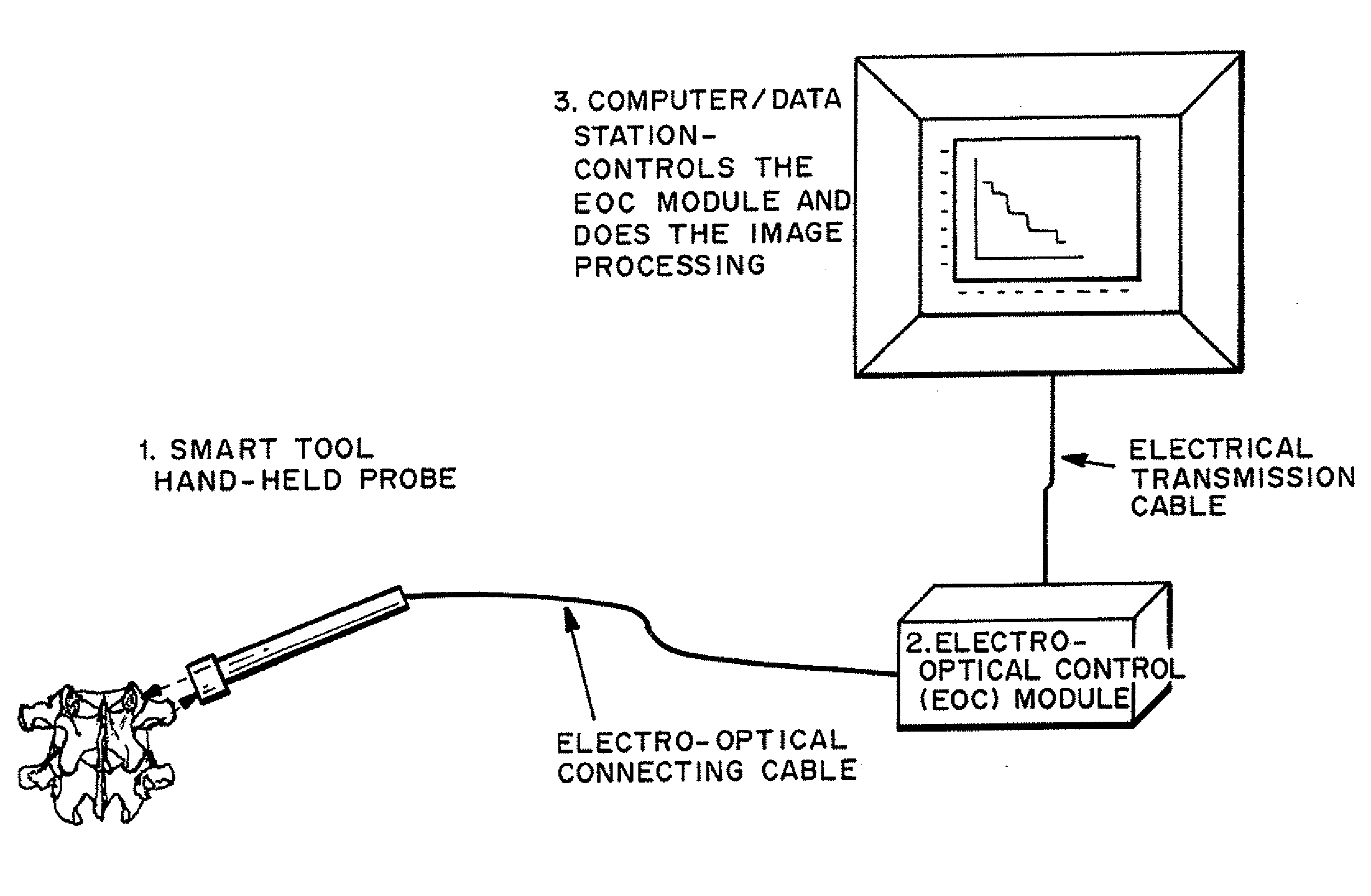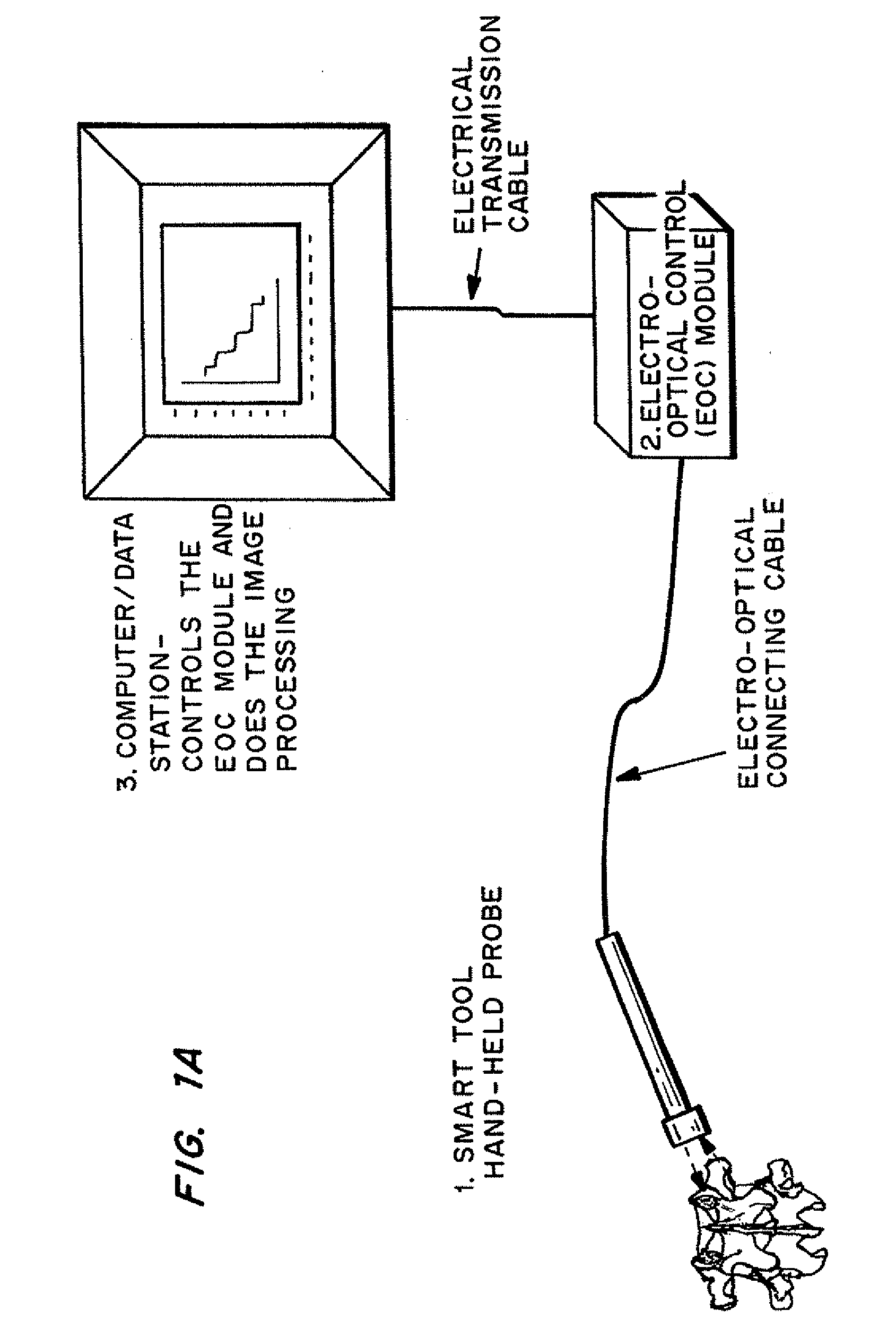Methods and devices for in situ tissue navigation
- Summary
- Abstract
- Description
- Claims
- Application Information
AI Technical Summary
Benefits of technology
Problems solved by technology
Method used
Image
Examples
Embodiment Construction
I. Definitions
[0047]As used herein, “smart” refers to an interactive device that transmits, receives and responds to information.
[0048]As used herein, “information” is a signal that provides information. The signal may be electrical, ultrasonic, laser (or light), radio, or other means of transmission of data.
[0049]As used herein, an “optical fiber” is any conduit through which light can be transmitted, either from a source, or as reflected, scattered, transmitted or diverted by or through a material, such as bone, cartilage or other tissue.
[0050]As used herein, an “optical source” is any optical source such as A laser, optical diode, active fiber, hybrid system emitting monochromatic or multi-wave length light, of different frequencies or wavelengths, including visible, infrared and ultraviolet range, continuously or modulated in amplitude (continuous, pulse modulation), phase and frequency
[0051]As used herein, an “optical receiver” is any optical energy receiving element / device suc...
PUM
 Login to View More
Login to View More Abstract
Description
Claims
Application Information
 Login to View More
Login to View More - R&D
- Intellectual Property
- Life Sciences
- Materials
- Tech Scout
- Unparalleled Data Quality
- Higher Quality Content
- 60% Fewer Hallucinations
Browse by: Latest US Patents, China's latest patents, Technical Efficacy Thesaurus, Application Domain, Technology Topic, Popular Technical Reports.
© 2025 PatSnap. All rights reserved.Legal|Privacy policy|Modern Slavery Act Transparency Statement|Sitemap|About US| Contact US: help@patsnap.com



